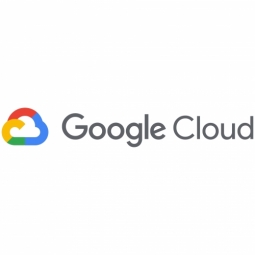Technology Category
- Infrastructure as a Service (IaaS) - Public Cloud
Applicable Industries
- Finance & Insurance
- National Security & Defense
Applicable Functions
- Product Research & Development
- Sales & Marketing
Use Cases
- Demand Planning & Forecasting
- Usage-Based Insurance
Services
- Cloud Planning, Design & Implementation Services
About The Customer
33Bondi is a technology, product, and design consultancy based near the iconic Bondi Beach in Sydney, Australia. The company helps businesses develop technology-dependent ideas and turn them into revenue-generating products and services. The team at 33Bondi includes Technology Lead Jim Watts, Marketing Lead Steve Muller, and Creative Lead Jonas Allen, and their backgrounds span well-known brands such as Fairfax Media, Atlassian, Unilever, Heineken International, and the Mambo fashion label. The company supplements its in-house capabilities with a designer based in Italy, engineers in India, and project managers in Australia.
The Challenge
33Bondi, a technology, product, and design consultancy based in Sydney, Australia, was faced with the challenge of delivering powerful advertising, marketing, technology, and transactional solutions to clients within tight timeframes. The company needed to manage spiky demand, particularly when sending out large volumes of emails to a user base of approximately 20 million. In one specific case, a bicycle insurance company wanted to launch a web presence in Australia, the United Kingdom, and the United States within 12 weeks, and needed to partner with a prominent social network for athletes. This required 33Bondi to create multinational web presence incorporating full transactional capabilities within a very short period. The company also needed to ensure that the solutions they provided met key security and compliance requirements, and instilled confidence in their clients.
The Solution
33Bondi turned to Google Cloud to overcome these challenges. Google Cloud's ability to manage spiky demand allowed 33Bondi to scale horizontally to meet demand, with costs rising in a predictable, controllable fashion. For the bicycle insurance company project, 33Bondi launched websites with transactional capabilities in each targeted market well within the 12-week deadline. Each website runs in Google App Engine to scale in line with demand. 33Bondi also used Google BigQuery to analyse data provided by cyclists to the insurance company in return for free products. The company plans to deploy Google Cloud Pub/Sub message-oriented middleware to further decouple its front- and back-end systems, and Google Cloud Dataflow to process batch and streaming data for analysis through Google BigQuery.
Operational Impact
Quantitative Benefit

Case Study missing?
Start adding your own!
Register with your work email and create a new case study profile for your business.
Related Case Studies.

Case Study
Real-time In-vehicle Monitoring
The telematic solution provides this vital premium-adjusting information. The solution also helps detect and deter vehicle or trailer theft – as soon as a theft occurs, monitoring personnel can alert the appropriate authorities, providing an exact location.“With more and more insurance companies and major fleet operators interested in monitoring driver behaviour on the grounds of road safety, efficient logistics and costs, the market for this type of device and associated e-business services is growing rapidly within Italy and the rest of Europe,” says Franco.“The insurance companies are especially interested in the pay-per-use and pay-as-you-drive applications while other organisations employ the technology for road user charging.”“One million vehicles in Italy currently carry such devices and forecasts indicate that the European market will increase tenfold by 2014.However, for our technology to work effectively, we needed a highly reliable wireless data network to carry the information between the vehicles and monitoring stations.”

Case Study
Safety First with Folksam
The competitiveness of the car insurance market is driving UBI growth as a means for insurance companies to differentiate their customer propositions as well as improving operational efficiency. An insurance model - usage-based insurance ("UBI") - offers possibilities for insurers to do more efficient market segmentation and accurate risk assessment and pricing. Insurers require an IoT solution for the purpose of data collection and performance analysis

Case Study
Data Capture for Afghanistan Forces
Electronic equipments on the field of Afghanistan provided information on the status of the vehicle and to identify potential threats surrounding it to the British Force. The monitoring and interpretation of this data requires robust and sophisticated digitization for data capture and communication.

Case Study
Smooth Transition to Energy Savings
The building was equipped with four end-of-life Trane water cooled chillers, located in the basement. Johnson Controls installed four York water cooled centrifugal chillers with unit mounted variable speed drives and a total installed cooling capacity of 6,8 MW. Each chiller has a capacity of 1,6 MW (variable to 1.9MW depending upon condenser water temperatures). Johnson Controls needed to design the equipment in such way that it would fit the dimensional constraints of the existing plant area and plant access route but also the specific performance requirements of the client. Morgan Stanley required the chiller plant to match the building load profile, turn down to match the low load requirement when needed and provide an improvement in the Energy Efficiency Ratio across the entire operating range. Other requirements were a reduction in the chiller noise level to improve the working environment in the plant room and a wide operating envelope coupled with intelligent controls to allow possible variation in both flow rate and temperature. The latter was needed to leverage increased capacity from a reduced number of machines during the different installation phases and allow future enhancement to a variable primary flow system.

Case Study
Automated Pallet Labeling Solution for SPR Packaging
SPR Packaging, an American supplier of packaging solutions, was in search of an automated pallet labeling solution that could meet their immediate and future needs. They aimed to equip their lines with automatic printer applicators, but also required a solution that could interface with their accounting software. The challenge was to find a system that could read a 2D code on pallets at the stretch wrapper, track the pallet, and flag any pallets with unread barcodes for inspection. The pallets could be single or double stacked, and the system needed to be able to differentiate between the two. SPR Packaging sought a system integrator with extensive experience in advanced printing and tracking solutions to provide a complete traceability system.

Case Study
Transforming insurance pricing while improving driver safety
The Internet of Things (IoT) is revolutionizing the car insurance industry on a scale not seen since the introduction of the car itself. For decades, premiums have been calculated using proxy-based risk assessment models and historical data. Today, a growing number of innovative companies such as Quebec-based Industrielle Alliance are moving to usage-based insurance (UBI) models, driven by the advancement of telematics technologies and smart tracking devices.







